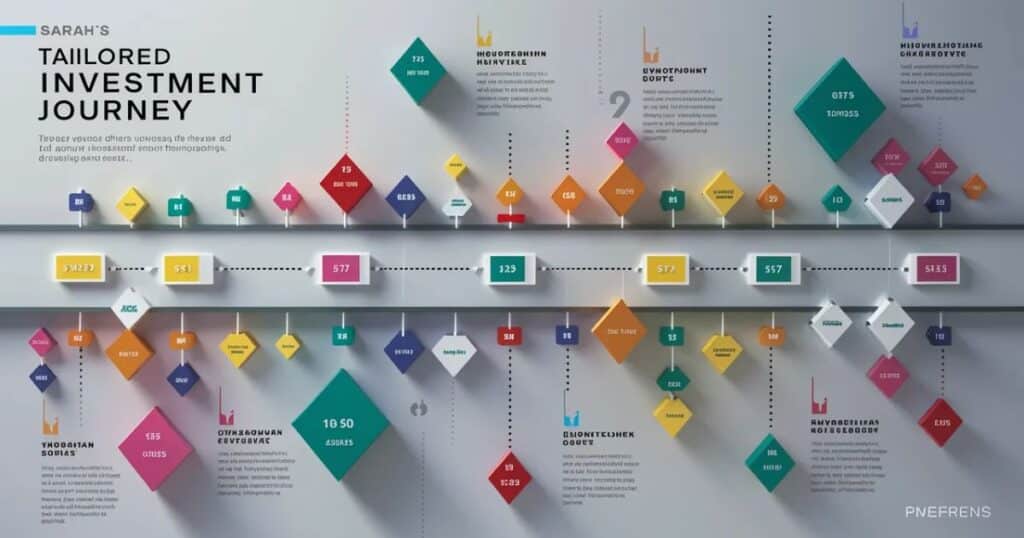Investing is a highly personal endeavor, where a one-size-fits-all approach simply won’t cut it. Your investment journey should be tailored to your unique financial goals, risk tolerance, and individual preferences. By discovering your personalized “investment sweet spot,” you can maximize returns while minimizing unnecessary risks. In this comprehensive guide, we’ll explore how to uncover your ideal investment strategy and build a portfolio that aligns with your specific needs.
Understand Your Investment Profile
The first step in personalized investing is to conduct a thorough self-assessment. Ask yourself:
- What are my financial goals? Are you saving for retirement, funding a child’s education, or building generational wealth? Clearly defining your objectives will shape your investment strategy.
- What is my time horizon? Your age and the number of years until you need the invested funds will influence the level of risk you can tolerate. A longer time horizon generally allows for higher risk exposure.
- What is my risk appetite? Some investors have a high tolerance for volatility, while others prioritize capital preservation. Understanding your risk profile is crucial for determining an appropriate asset allocation.
- What are my income and growth needs? Investors in the accumulation phase may prioritize growth, while those in retirement may require a steady income stream from their investments.
Once you’ve answered these questions, you’ll have a better grasp of your investment profile, which will inform your personalized strategy.
Identify Your Investing Style
Investors can broadly be categorized into two styles: active and passive. Let’s explore each approach:
Active Investors – Hands-On Approach
Active investors actively manage their portfolios, seeking to outperform the market through rigorous research, analysis, and frequent trading. This style suits those with a higher risk tolerance and a keen interest in financial markets.
Potential Rewards:
- Opportunity to generate above-average returns
- Ability to capitalize on market inefficiencies
- Flexibility to adapt to changing market conditions
Potential Risks:
- Higher transaction costs and taxes
- Emotional decision-making can lead to costly mistakes
- Requires significant time and effort
Passive Investors – The Low-Maintenance Route

Passive investors follow a buy-and-hold strategy, typically investing in index funds or exchange-traded funds (ETFs) that track the broader market. This approach is suitable for those with a lower risk appetite and a desire for simplicity.
Benefits:
- Lower fees and expenses
- Broad diversification across markets
- Tax efficiency due to less frequent trading
Drawbacks:
- Limited potential for outperforming the market
- Exposure to market downturns
Determine which style resonates with your personality, risk tolerance, and level of involvement in managing your investments.
Craft Your Tailored Investment Portfolio
Armed with an understanding of your investment profile and style, it’s time to construct a diversified portfolio. Here’s a step-by-step guide:
- Determine your asset allocation: Based on your risk tolerance and time horizon, allocate your investments across different asset classes, such as stocks, bonds, and alternatives. A general rule of thumb is to hold a higher percentage of stocks when you have a longer time horizon and a higher risk tolerance.
“The goal of diversification is not necessarily to boost performance; it is to allow reasonable performance while lowering risk.” – Harry Markowitz - Build your stock portfolio: Within your stock allocation, consider diversifying across sectors, market capitalizations, and geographic regions. Value investors may prefer undervalued stocks with strong fundamentals, while growth investors might gravitate towards companies with high earnings potential. Stock valuation metrics to consider:
- Price-to-Earnings (P/E) Ratio
- Price-to-Earnings-Growth (PEG) Ratio
- Price-to-Book (P/B) Ratio
- As an example, a value investor might be drawn to a stock with a low P/E ratio, indicating potential undervaluation, while a growth investor may prioritize a high PEG ratio, signaling future earnings growth potential.
- Incorporate bonds: Bonds can provide stability and income to your portfolio. Consider a mix of government, corporate, and municipal bonds based on your risk profile and tax situation. Understand bond pricing, yields, and the inverse relationship between bond prices and interest rates. For instance, if you’re in a high tax bracket, municipal bonds may be appealing as their interest is typically exempt from federal income tax. Conversely, if you’re in a lower tax bracket, the higher yields of corporate bonds could be more advantageous.
- Explore alternative investments: Allocating a portion of your portfolio to alternatives like real estate, commodities, or cryptocurrencies can further diversify your holdings and potentially reduce overall risk. For example, investing in real estate investment trusts (REITs) can provide exposure to the real estate market without the hassle of direct property ownership. Commodities like gold or oil can act as inflation hedges, while cryptocurrencies offer speculative growth potential.
Here’s an example of a balanced portfolio model for a moderate-risk investor:
| Asset Class | Allocation |
| Stocks | 50% |
| Bonds | 40% |
| Alternatives | 10% |
Remember, asset allocation is a personal decision based on your unique circumstances and should be periodically reviewed and rebalanced as needed.
Read This Post: Raiser 6795 EDI Payments Smart Choice For Modern Effective Businesses
Leverage Technology and Robo-Advisors

In today’s digital age, technology can be a powerful ally in personalized investing. Robo-advisors, such as Betterment, Wealthfront, and Vanguard Digital Advisor, offer automated investment management services tailored to your goals and risk profile.
Benefits of Robo-Advisors:
- Low fees and account minimums
- Automated portfolio construction and rebalancing
- Tax-efficient strategies
- Access to financial advisors (in some cases)
Many robo-advisors use sophisticated algorithms to create and manage your portfolio based on your personalized risk profile and investment objectives. They can also automatically rebalance your holdings and employ tax-loss harvesting strategies to maximize efficiency.
However, it’s essential to remember that robo-advisors are not a panacea. They rely on algorithms and may not fully capture the nuances of your personal situation. Consider using robo-advisors in conjunction with human advisors for a comprehensive approach.
Continually Review and Rebalance
Personalized investing is an ongoing process, not a one-time event. As your life circumstances change, your investment strategy should evolve accordingly. Regularly review your portfolio to ensure it remains aligned with your goals and risk tolerance.
Tips for Periodic Portfolio Reviews:
- Rebalance your asset allocation: Over time, some asset classes may outperform others, throwing off your target allocation. Rebalancing helps maintain your desired risk exposure.
- Reassess your goals and time horizon: Significant life events, such as marriage, children, or retirement, may necessitate adjustments to your investment strategy.
- Evaluate your risk tolerance: Your appetite for risk can change over time. Revisit your risk profile and make adjustments as needed.
- Stay informed: Stay up-to-date with market trends, economic conditions, and regulatory changes that may impact your investments.
- Consider seeking professional advice: For complex financial situations or substantial portfolios, consulting a qualified financial advisor can provide valuable guidance.
By regularly reviewing and rebalancing your portfolio, you can ensure that your investments remain aligned with your evolving needs and goals.
Case Study: Sarah’s Personalized Investment Journey

To illustrate the power of personalized investing, let’s follow Sarah’s journey:
Sarah, a 35-year-old software engineer, had been contributing to her employer’s 401(k) plan but felt overwhelmed by the investment choices. After assessing her goals (retirement at 65) and risk tolerance (moderate), she decided to work with a robo-advisor.
The robo-advisor’s algorithm recommended a portfolio consisting of 60% stocks (diversified across sectors and market caps), 30% bonds (a mix of government and corporate), and 10% alternative investments (including real estate and commodities).
Over the years, Sarah’s portfolio was automatically rebalanced to maintain her target allocation. When she got married and had children, she adjusted her risk profile to a more conservative stance, shifting more assets into bonds.
By following a personalized investment approach, Sarah stayed on track to meet her retirement goals while aligning her portfolio with her evolving life circumstances.
Conclusion
Discovering your personalized investment sweet spot is a journey of self-discovery, discipline, and ongoing optimization. By understanding your investment profile, identifying your investing style, crafting a tailored portfolio, leveraging technology, and continually reviewing and rebalancing, you can navigate the financial markets with confidence and achieve your unique objectives.
Remember, investing is a long-term endeavor, and success often hinges on patience, consistency, and adaptability. Embrace the process of personalized investing, and you’ll be well on your way to maximizing returns while minimizing unnecessary risks.
As the legendary investor Benjamin Graham said, “The investor’s chief problem – and even his worst enemy – is likely to be himself.” By adopting a personalized investment approach, you can overcome emotional biases and stay true to your goals, even during periods of market volatility.







